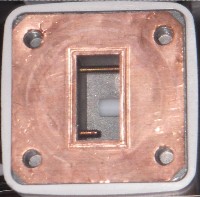| Home Login Register |
| Satellite Internet forum › Dish pointing and alignment › TS2 Max signal volts of 4.5v on INTELSAT 10-02 1W |
|
Pages: 1
|
TS2 Max signal volts of 4.5v on INTELSAT 10-02 1W(Read 8295 times) |
|
ahedin
Member
★★ Offline Posts: 8 Afghanistan |
Jun 4th, 2009 at 9:37am
|
| Back to top |
« Last Edit: Jun 8th, 2009 at 11:22am by Admin1 »
IP Logged
|
|
Eric Johnston
Senior Member
★★★ Offline Posts: 2109 |
Reply #1 - Jun 4th, 2009 at 11:33am
|
| Back to top |
« Last Edit: Jun 4th, 2009 at 2:11pm by Eric Johnston »
IP Logged
|
|
ahedin
Member
★★ Offline Posts: 8 Afghanistan |
Reply #2 - Jun 6th, 2009 at 6:48am
|
| Back to top |
IP Logged
|
|
Eric Johnston
Senior Member
★★★ Offline Posts: 2109 |
Reply #3 - Jun 6th, 2009 at 9:11am
|
| Back to top |
« Last Edit: Jun 6th, 2009 at 11:54am by Eric Johnston »
IP Logged
|
|
ahedin
Member
★★ Offline Posts: 8 Afghanistan |
Reply #4 - Jun 6th, 2009 at 9:47am
|
| Back to top |
« Last Edit: Jun 7th, 2009 at 11:28am by Admin1 »
IP Logged
|
|
Eric Johnston
Senior Member
★★★ Offline Posts: 2109 |
Reply #5 - Jun 6th, 2009 at 11:25am
|
| Back to top |
IP Logged
|
|
ahedin
Member
★★ Offline Posts: 8 Afghanistan |
Reply #6 - Jun 7th, 2009 at 8:12am
|
| Back to top |
IP Logged
|
|
Eric Johnston
Senior Member
★★★ Offline Posts: 2109 |
Reply #7 - Jun 7th, 2009 at 10:01am
|
| Back to top |
« Last Edit: Jun 7th, 2009 at 11:17am by Eric Johnston »
IP Logged
|
|
ahedin
Member
★★ Offline Posts: 8 Afghanistan |
Reply #8 - Jun 8th, 2009 at 8:15am
|
| Back to top |
IP Logged
|
|
Eric Johnston
Senior Member
★★★ Offline Posts: 2109 |
Reply #9 - Jun 8th, 2009 at 9:08am
|
| Back to top |
IP Logged
|
|
ahedin
Member
★★ Offline Posts: 8 Afghanistan |
Reply #10 - Jun 8th, 2009 at 10:10am
|
| Back to top |
IP Logged
|
|
Eric Johnston
Senior Member
★★★ Offline Posts: 2109 |
Reply #11 - Jun 8th, 2009 at 11:06am
|
| Back to top |
IP Logged
|
|
skymoe8381
Member
★★ Offline Posts: 11 |
Reply #12 - Jun 9th, 2009 at 4:54pm
|
| Back to top |
IP Logged
|
|
Pages: 1
|
Email me: eric@satsig.net
Powered by YaBB 2.5.2!
YaBB Forum Software © 2000-. All Rights Reserved.
Disclaimer, Terms of Use and Privacy Forum User Agreement Forum rules Cookie policy.





